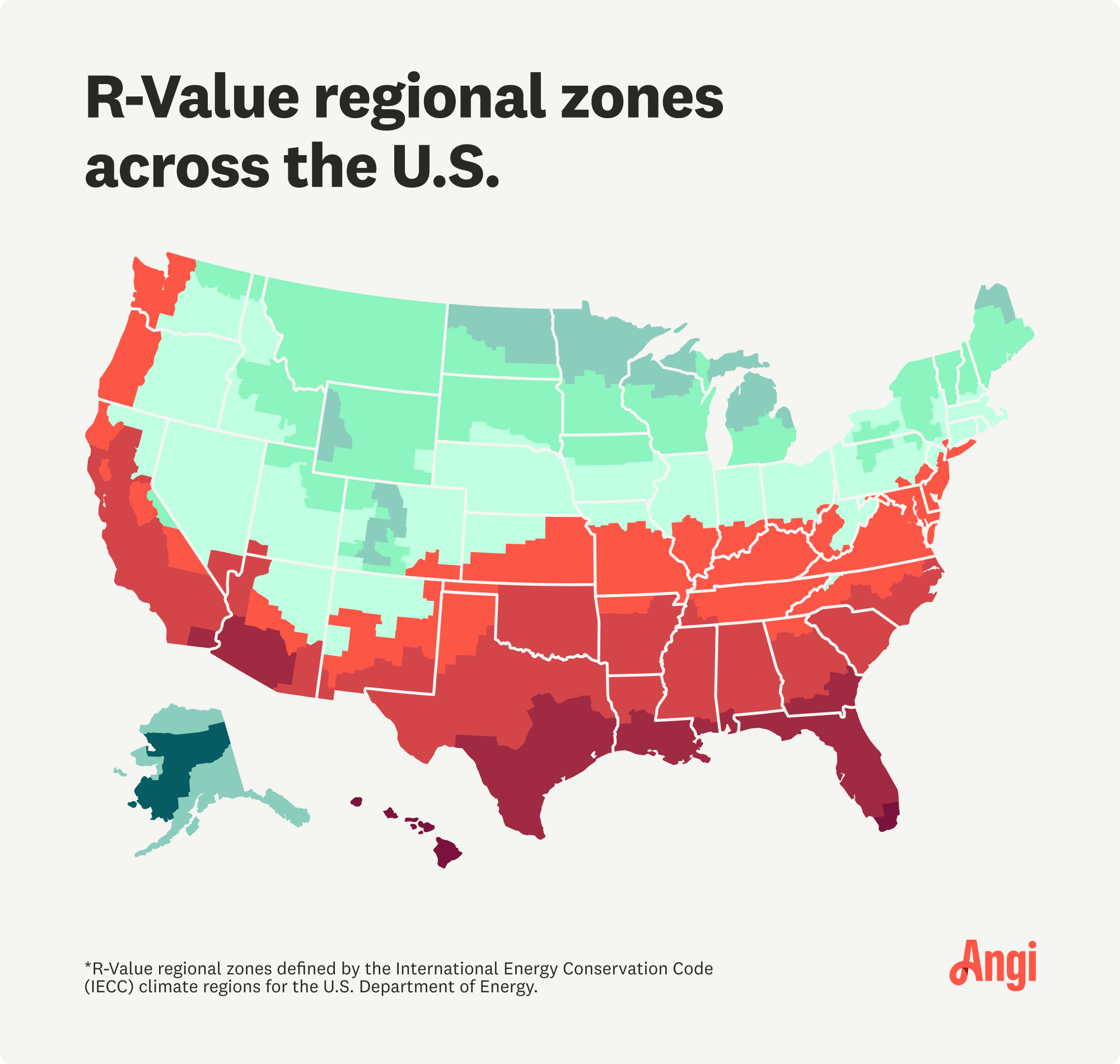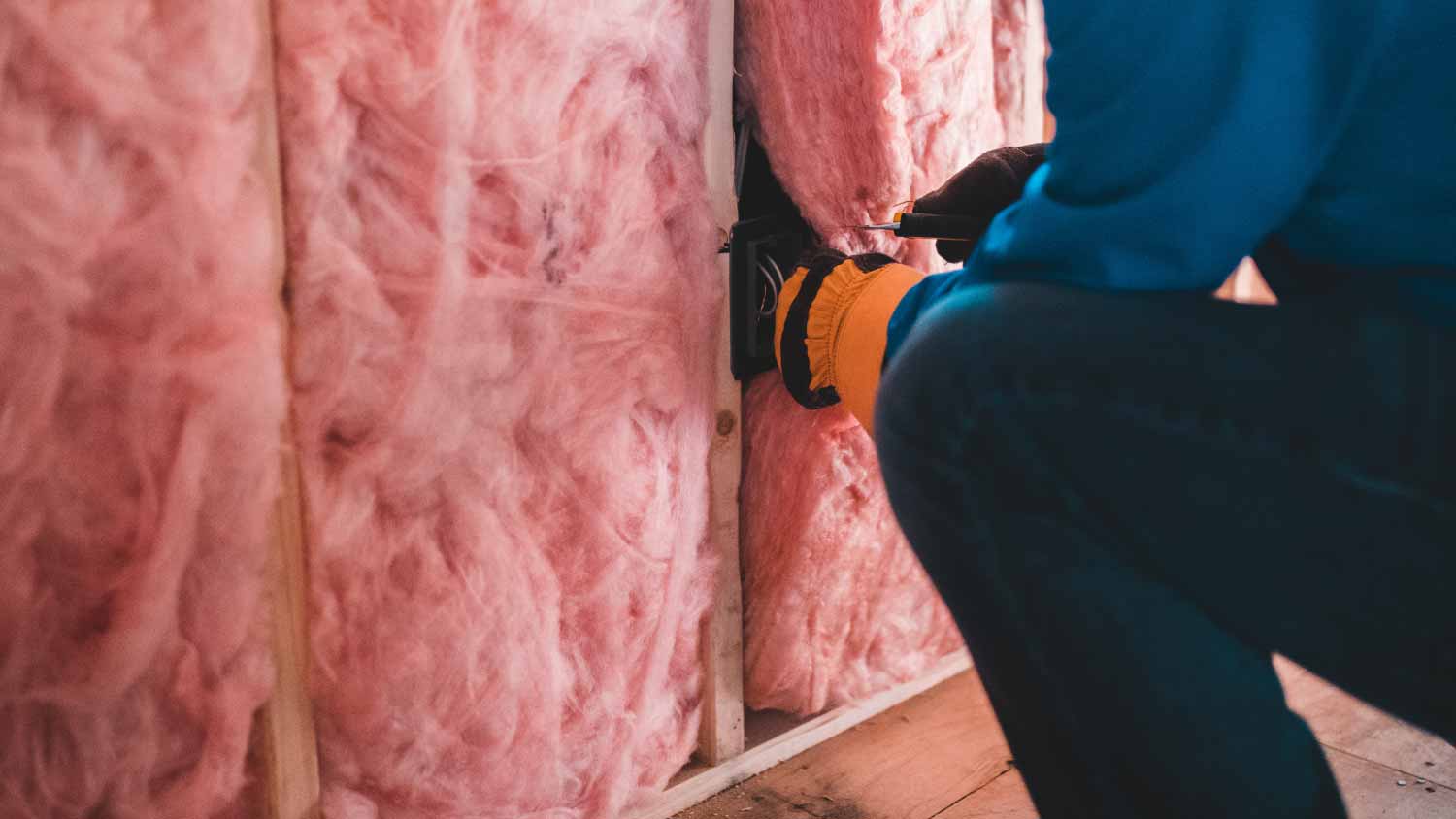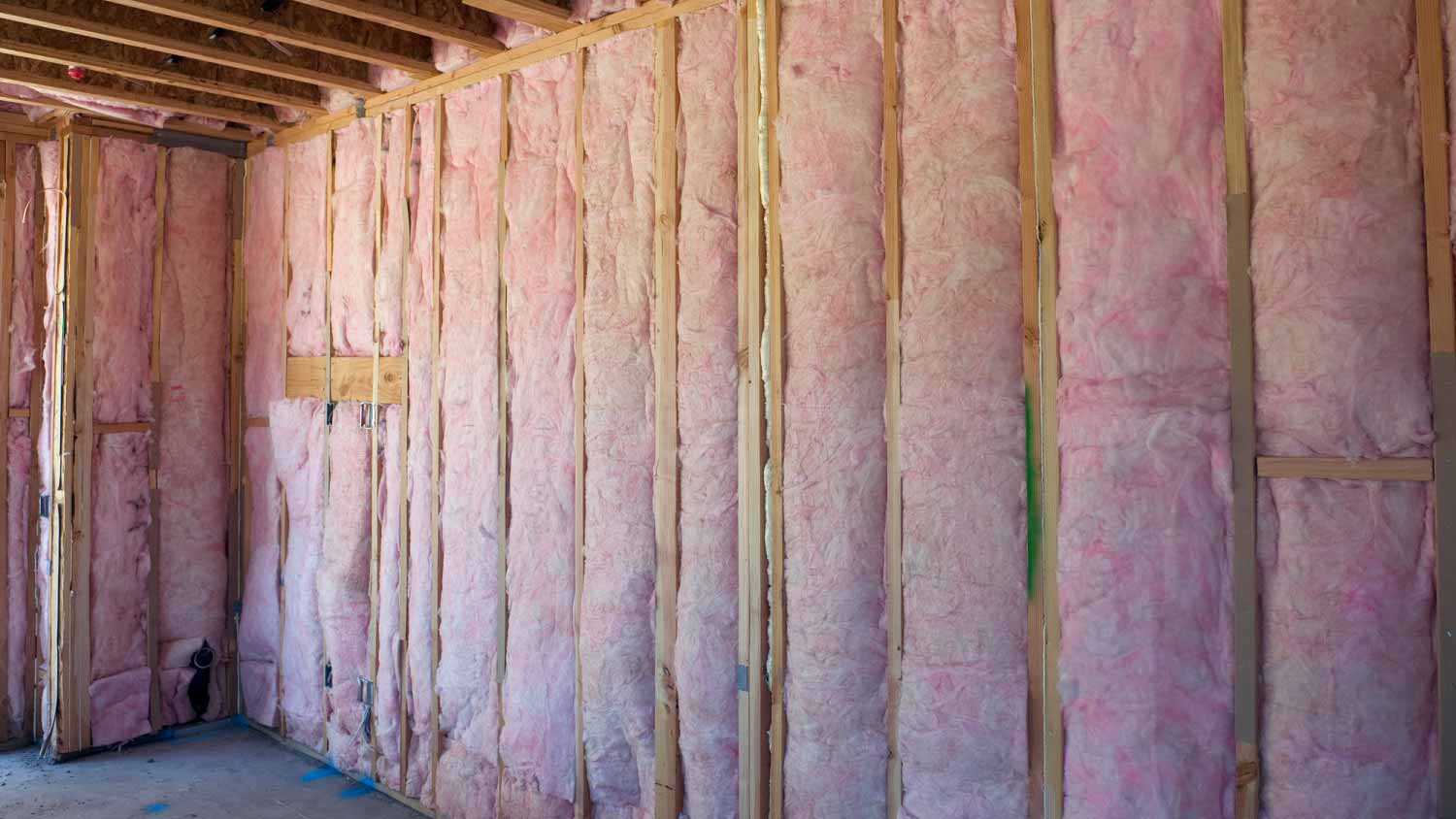
Discover roof insulation costs, including average prices, key cost factors, and expert tips to help you budget and save on your next project.
The differences are more subtle than significant


R13 insulation carries a lower price than R15 per square foot.
R15 insulation has slightly better insulating properties than R13.
The minimal benefits of R15 rarely justify paying more for it than for R13.
If you want better energy efficiency and a comfortable living space, adding insulation to your home is a smart choice. To simplify choosing the best product for your needs, insulation manufacturers have agreed on a standardized system—the R-value—that measures each product's effectiveness. Each R-value is a number that you can use to compare products. Learn about two popular R-values—R13 versus R15 insulation—to decide which is best for you.
When comparing R13 versus R15 insulation, the differences are subtle. You can use both in similar places and climates. R15 insulation offers slightly more thermal resistance than R13 insulation, but it also costs more. Ultimately, it’s difficult to justify paying a significantly higher price for R15 when R13’s insulative properties are only slightly lower than R15.
The designations of R13 and R15 provide a clue to their differences, too. R-value, short for resistance value, measures the effectiveness of the material in preventing energy loss per inch of thickness.

Higher R-values provide greater effectiveness. R30 insulation is roughly twice as effective as R15 at the same thickness. You could use R15 insulation that’s twice as thick to match the effectiveness of R30 insulation. However, it’s easier to use R30 insulation than doubled-up R15 insulation.
Locations where you can use R13 or R15 insulation in various U.S. climate zones are below. You can use higher R-value insulation, too, if desired. Keep in mind that R13 and R15 are not recommended for attics in any climate zone.
| Zone | Walls | Floors | Crawlspace |
|---|---|---|---|
| 1 | R13 or R15 | R13 | R13 |
| 2 | R13 or R15 | R13 or R15 | R13 or R15 |
| 3 | R13 or R15 | R13 or R15 | R13 or R15 |
| 4 | R13 or R15 | Neither | Neither |
| 5 | R13 or R15 | Neither | Neither |
| 6 | R13 or R15 | Neither | Neither |
| 7 | R13 or R15 | Neither | Neither |
| 8 | R13 or R15 | Neither | Neither |

R13 insulation is a material that provides an appropriate thermal resistance for use in walls anywhere in the United States. However, it only works in floors and crawl spaces in the extreme southern U.S. Its thermal resistance measurement will not work for attic insulation.
| Pros | Cons |
|---|---|
| Multiple formats | Not useful for attics |
| Costs less than R15 | Not for cold climates |
| Ideal for use in walls | Thinner than R15 |
Best for:
Those who want inexpensive insulation for walls.
Those who want low-cost floor insulation in warm climates.
Those who need multiple insulation format options.
R13 insulation is a cost-effective R-value for use inside walls when you select fiberglass rolls with or without facing. It can also be used in floors or crawl spaces in warm climates in the southeastern and southwestern U.S., including most of Texas and California.
Because it’s a little thinner than R15, it costs less per square foot than R15. Since the two formats are only slightly different in terms of thermal effectiveness, the lower price of R13 is a significant benefit versus R15.
The insulative properties of R13 are slightly less than R15 because it’s slightly less dense. You won’t be saving much space with R13 compared to R15 because the thickness difference is only a fraction of an inch less for R13 spray foam or blown-in cellulose. R13 and R15 mineral wool and fiberglass have the same thicknesses.
If you live in the northern two-thirds of the U.S., you shouldn’t use R13 anywhere but inside walls. If you want to use it on floors or crawl spaces, you’ll need to double up on the material. You should not use R13 insulation in attics in any area of the U.S. unless you’re going to install it in triple or quadruple the thickness.

R15 insulation is another insulative material useful primarily in walls. It is also effective in floors or crawl spaces in the extreme southern U.S. However, it should not be used in attics. R15 has slightly greater thermal resistance than R13, but the difference is minimal.
| Pros | Cons |
|---|---|
| Thicker than R13 | Not good for attics |
| Best for use in walls | Not for cold climates |
| Several formats | Pricier than R13 |
Best for:
Those looking for insulation inside wall framing.
Those who live in the South and want inexpensive floor insulation.
Those who want multiple installation options.
R15 insulation offers slightly better thermal insulating properties than R13. Some of its formats are a fraction of an inch thicker than R13, making it more effective at helping with energy efficiency. However, the difference is minimal.
R15 is slightly thicker than R13 for spray foam and blown-in cellulose. Both R15 and R13’s thicknesses are the same with fiberglass and mineral wool.
Although its best use is inside wall framing, you could use R15 insulation inside crawl spaces and floors in the southern one-third of the continental U.S.
You will pay more per square foot for R15 than R13 from the same manufacturer and in the same format. R15 is not as commonly found in stock as R13, which may increase the price at certain retailers. Because of the minimal difference in thermal efficiency between the two options, it’s tough to justify paying a higher price for R15.
R15 insulation is not suitable for use in crawl spaces or floors in the northern two-thirds of the U.S. unless you double its normal thickness. In southern Florida, you should use only R13 or lower R-value insulation in floors and crawl spaces.
You should not use R15 as attic insulation anywhere in the U.S. unless you double its thickness in the southern one-third of the U.S. and triple or quadruple its thickness in the northern two-thirds of the U.S.
Both R13 and R15 are available as batt and roll insulation. According to Angi data, nearly 44% of homeowners report installing batt and roll insulation in their attics. Other common insulation locations include inside walls and ceilings. Check out the most common places to install batt and roll insulation:
Learn more about R13 versus R15 insulation and when it’s appropriate to use either option.
When comparing R13 versus R15 insulation, the R-value you need for maximum thermal resistance effectiveness matters a lot. R15 wins this one, as it has a slightly better insulating property than R13.
You can install both R13 and R15 insulation in multiple formats like fiberglass, mineral wool, spray foam, blown-in cellulose, and polyisocyanurate (polyiso) boards. Both are available in faced versus unfaced insulation, too.
Both R13 and R15 insulation should provide 60 years or more of effective insulating properties. However, if you or pests disturb the insulation, it could lose some of its effectiveness.
R13 is the lower-cost option. We compared R13 and R15 insulation’s prices at big-box retailers, using the same brands for each individual comparison.
Faced fiberglass insulation roll: R13 costs about $.49 per square foot, while R15 costs about $.89 per square foot.
Faced fiberglass insulation batt: R13 costs about $.63 per square foot, while R15 costs about $1.02 per square foot.
Unfaced fiberglass insulation batt: R13 costs about $1.33 per square foot, while R15 costs about $1.46 per square foot.
R13 was less expensive per square foot in all of our comparisons. However, you may find that a generic brand of R15 could cost less than R13 from a well-known brand. You also might find that R15 is less expensive per square foot when you purchase it in bulk compared to buying one or two packages of R13.
R13 and R15 insulation are available in similar formats and have similar installation requirements. If you want to install batts or rolls yourself, you could do so. However, if you want to install spray foam or blown-in material, you should hire an insulation pro to do the work.
Who installs insulation? You can hire a local professional insulation installer to do the work for you. The pro will have the equipment and know-how to install the insulation quickly with as little mess as possible.
You should check the integrity of the insulation every year. Look for areas of damage from rodents, water leaks, or insects. If you see areas of disturbance, you should repair them to maintain thermal effectiveness.
Right Away Construction installed new siding and insulation on my house. They did a great job for a great price. They were very professional and had to work through some rainy weeks but the kept at it and got the job done. The end result looks great!
Tom treated all my jobs like they were being done on his own house. The quality of his work and the time and effort he puts into the small details made him the obvious choice for all our projects. Below are some of the ways Tom differs from the average contractor. Tom does the work...
We had a renovation of the top floor of our rowhouse done in anticipation of the birth of our child. Robert was extremely friendly in the beginning and talked a very good game about the typical problems with contractors and their lack of communication and follow through. He was very...
She began by reviewing a year of energy bills with me and gave me a comparison to other homes. I can't say that the information was shocking, but it set the stage perfectly for all of the rest of the work she would do and the explanations she would give. After that, she set up the door...
We had been thinking about obtaining a home energy audit for a while, since some rooms were drafty and cold in winter which seemed to indicate that we did not have enough insulation. Also, we noticed that some stink bugs were getting into the house, so we figured there must be air leaks. With...
From average costs to expert advice, get all the answers you need to get your job done.

Discover roof insulation costs, including average prices, key cost factors, and expert tips to help you budget and save on your next project.

The cost of blown-in insulation costs varies depending on the type of insulation, labor, prep work, and more. Learn more about the cost factors in this guide.

How much does a radiant barrier cost? Our guide breaks down prices by type of barrier and size of your attic space.

What is a radiant barrier? This reflective building material is designed to reduce heat transfer and save you money on energy costs.

Read our step-by-step guide and learn how to remove fiberglass insulation. Our instructions will help you remove this tricky material quickly and safely.

Spray foam insulation versus fiberglass—how do you choose? Compare the cost, durability, R-value, and more to pick the right one.